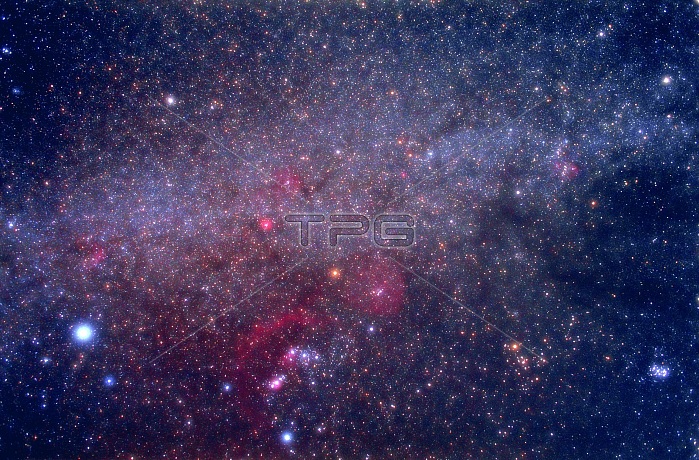
The Winter Milky Way stretches from brilliant Sirius at lower left, to Capella at upper right. It is an extremely rich collection of open clusters and emission nebulae located among the brightest stars in the sky and some of the most famous and easily recognized constellations. From our vantage point on Earth, as we look at the Milky Way in the winter night sky, we are looking in the opposite direction from the center of our galaxy in the direction of Sagittarius. Because the direction of the center of our galaxy contains so much more dust, star clouds and dust lanes appear much redder in color than the Milky Way in this area of the sky. The largest emission nebula in the photo is Sh2-276, Barnard's loop, seen as a semi-circle around the belt and sword of Orion. The next largest nebula is Sh2-264 surrounding Meissa (Lambda Orionis). Across the bottom of the frame are the constellations of Canis Major, Monoceros, Orion and Taurus, with the Hyades and Pleiades clusters at lower right. Across the top are Canis Minor, Gemini and Auriga.
| px | px | dpi | = | cm | x | cm | = | MB |
Details
Creative#:
TOP22308740
Source:
達志影像
Authorization Type:
RM
Release Information:
須由TPG 完整授權
Model Release:
N/A
Property Release:
No
Right to Privacy:
No
Same folder images:

 Loading
Loading